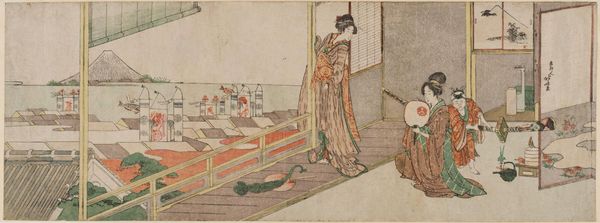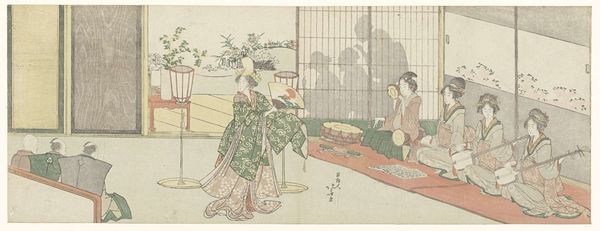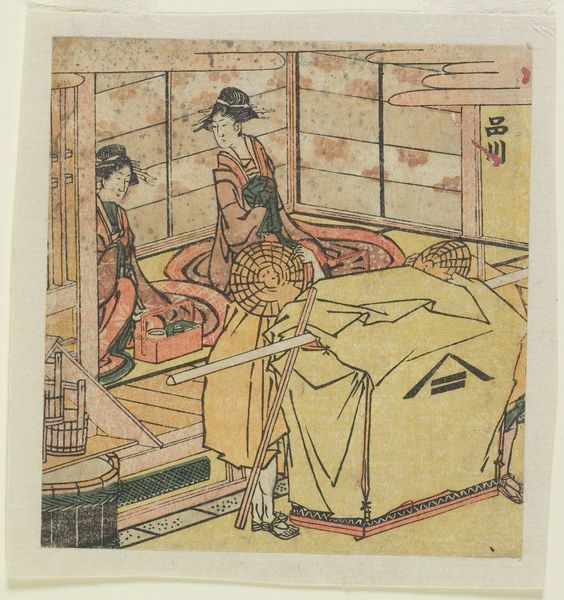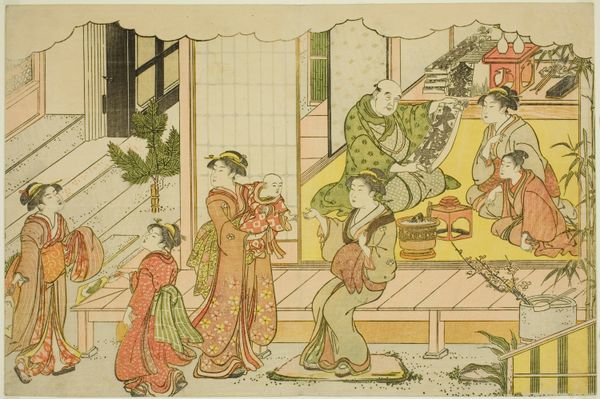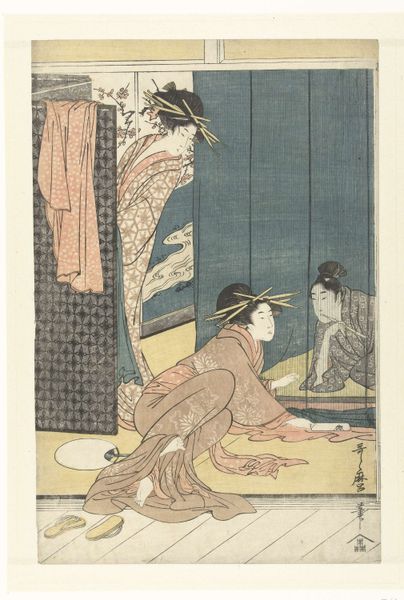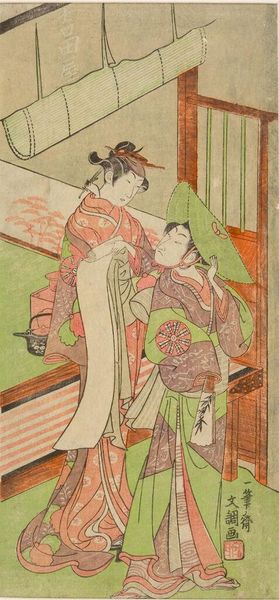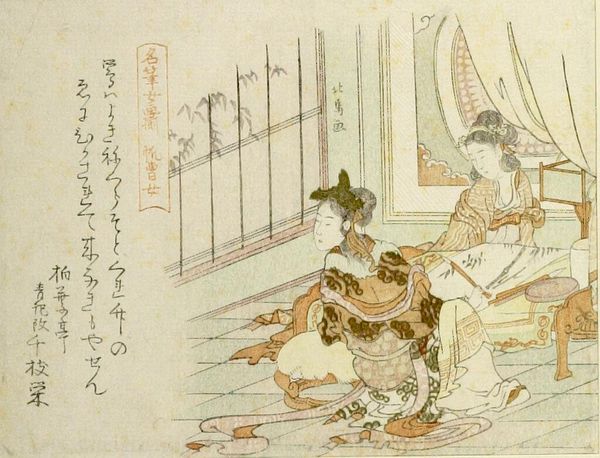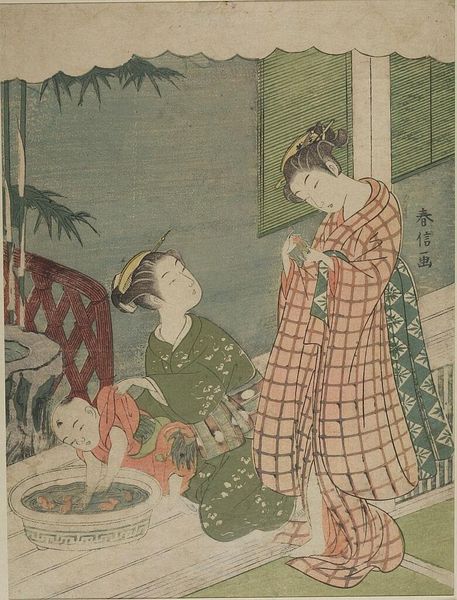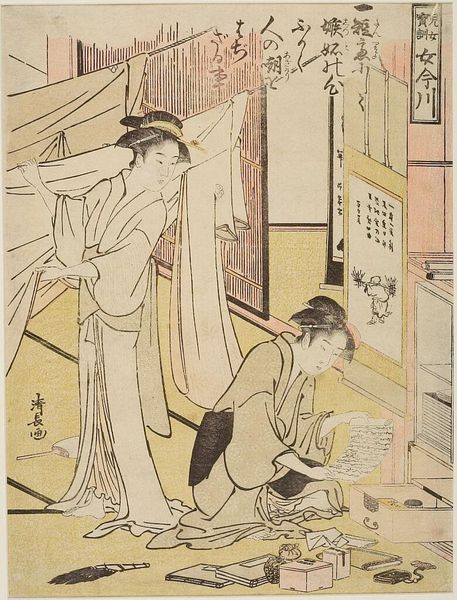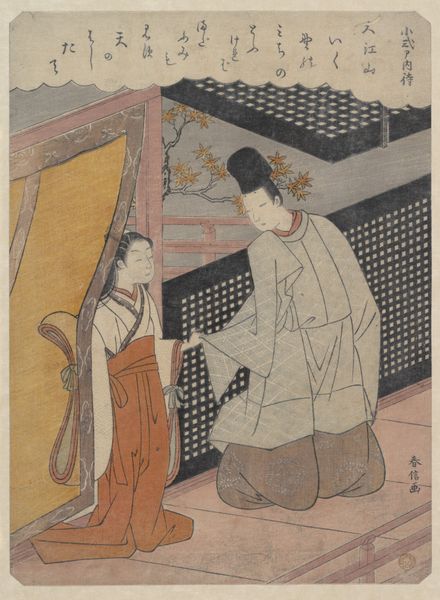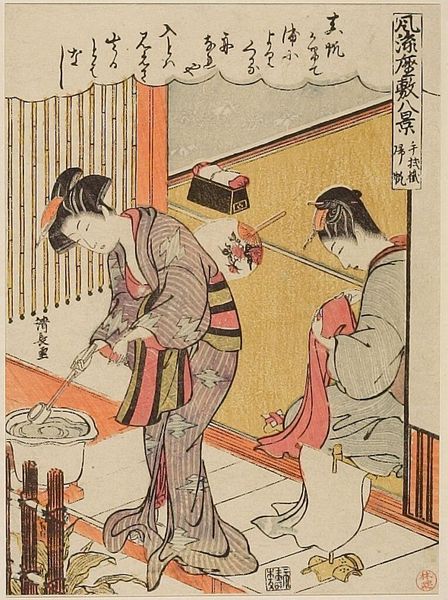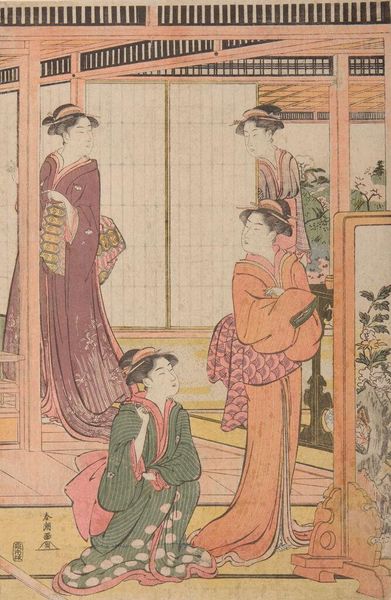
drawing, print, textile, ink, woodblock-print
#
drawing
#
narrative-art
# print
#
asian-art
#
textile
#
ukiyo-e
#
ink
#
woodblock-print
#
genre-painting
#
erotic-art
Dimensions: height 102 mm, width 288 mm
Copyright: Rijks Museum: Open Domain
Editor: So, here we have "Liefdespaar bespied" by Katsushika Hokusai, created in 1813. It seems to be a woodblock print depicting…well, intimate relations being observed. It strikes me as both humorous and a little unsettling. What do you make of it? Curator: This piece, like much of Hokusai's work, invites us to consider the complexities of social norms and power dynamics. Consider the voyeuristic element—who is doing the watching and what does that imply about social hierarchies and permissible behaviors? It makes us ask whether the gaze is a reflection on the nature of seeing, a gendered commentary, or something else. What about the placement of the figures and architecture in relation to each other draws your attention? Editor: I notice the composition is divided into three distinct sections, almost like panels in a comic. There's the couple, then the woman peering through a screen, and then another figure seemingly on a balcony. Curator: Exactly. How does this fragmentation influence the narrative? Think about the concept of privacy, particularly for women, during that period. Also, remember Hokusai’s world of Ukiyo-e – are these scenes intended for pleasure or also some social commentary? Editor: So, is Hokusai making a statement about the lack of privacy for women, or maybe critiquing the male gaze itself? It feels relevant even today, with all the discussions around consent and surveillance. Curator: Precisely! The ambiguity is deliberate, I think. He’s presenting a slice of life and inviting us to question its implications. Hokusai's skillful use of line and composition forces us to actively engage with those uncomfortable questions surrounding sex, spectatorship and society. It speaks to enduring challenges. Editor: It is amazing to see that, even 200 years after it was made, this print is making us think about these issues. Curator: Indeed. It speaks to the enduring power of art to provoke reflection and inspire social change. It pushes us to acknowledge that certain themes are universal.
Comments
No comments
Be the first to comment and join the conversation on the ultimate creative platform.
